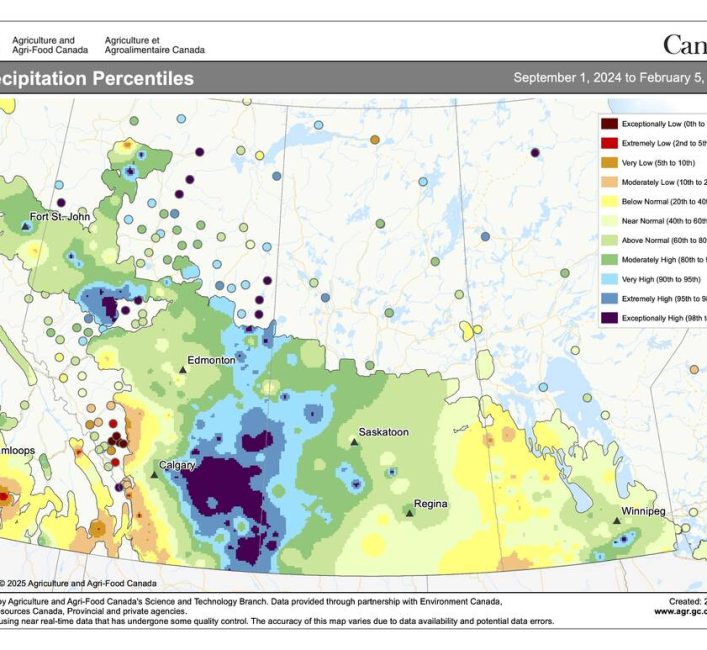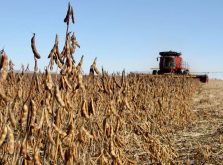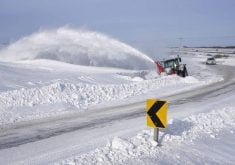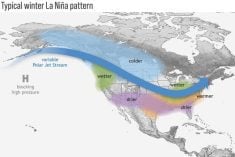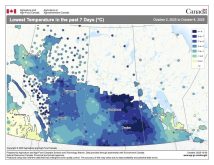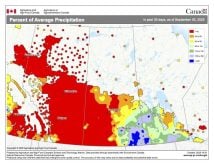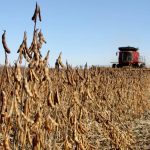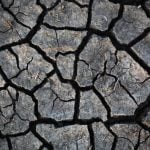Back in the middle of January I started to write about the top weather events around the world.
I then took a break from that to tackle a good question from one of our younger readers. Since then, I have received several good questions from other young readers, giving me plenty of questions to answer over the next couple of months — but keep them coming!
For this issue we are going back to finish our look at the top weather stories from around the world in 2024.
Read Also
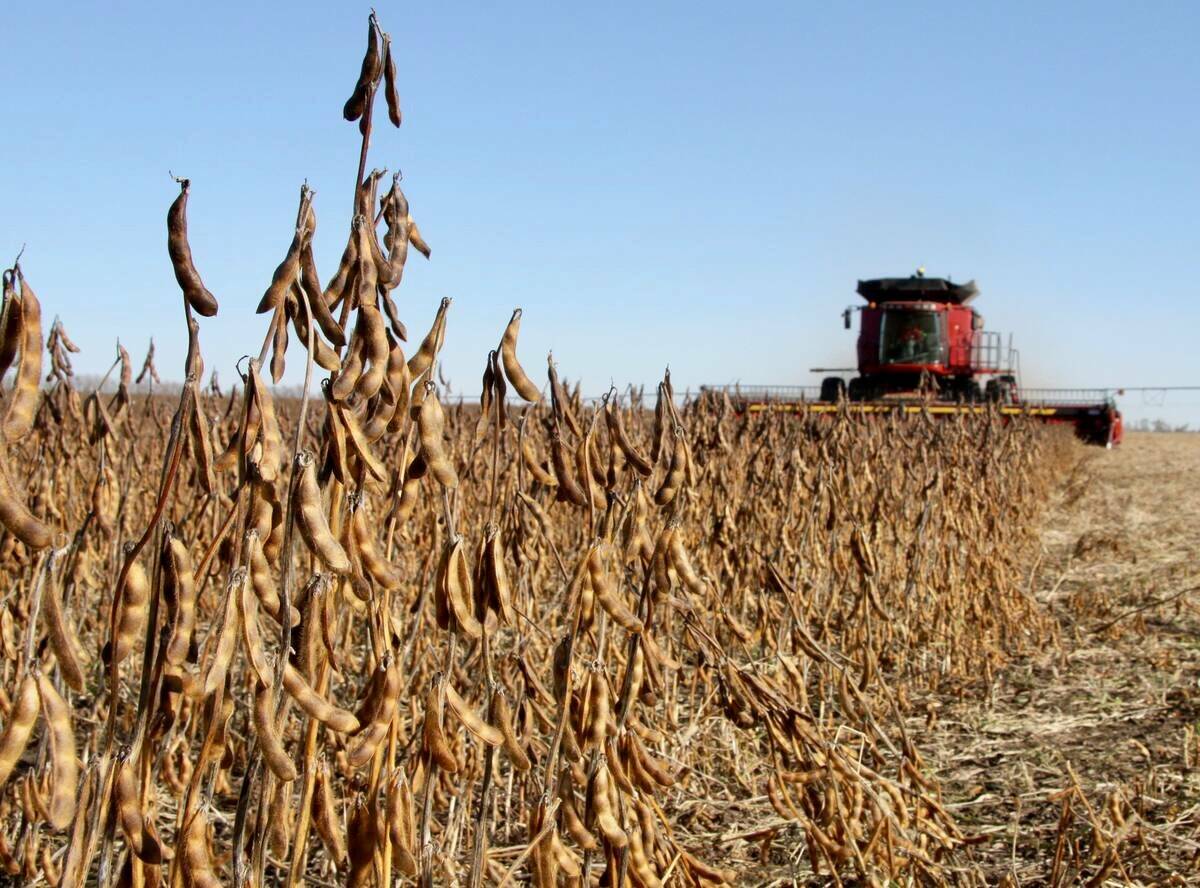
October rain recharges Manitoba soils
Daniel Bezte looks back on October weather on the Prairies and looks ahead to see whether there’s any consensus for this winter’s weather.
But first, the earliest global temperature data for January has just come out, and for me it is particularly disturbing. According to Copernicus Climate Change Service, January 2025 was the warmest January on record, despite there being a weak La Niña. La Niña is the opposite of El Niño and sees a large portion of the tropical Pacific Ocean exhibit cooler than average ocean temperatures. This in turn will usually lead to cooler than average temperatures. This does not appear to be the case this time round and this is what is disturbing.
To quote directly from Copernicus: “January 2025 was 1.75 (degrees Celsius) above the pre-industrial level and was the 18th month in the last 19 for which the global-average surface air temperature was more than 1.5 C above the pre-industrial level. The last 12-month period (February 2024 to January 2025) was 0.73 C above the 1991 to 2020 average, and 1.61 C above the estimated 1850 to 1900 average used to define the pre-industrial level”.
I do not want to ring alarm bells, but January should not have been a record warm month. We will have to wait and see if the next couple of months follow January, or whether we see the expected cool down that should occur with the current global weather patterns.
Back to the top weather stories globally in 2024, we turn to Asia, where Typhoon Yagi hit and combined with the already wet monsoon season in September, brought catastrophic flooding to part of southeast Asia, leaving more than 500 dead. The Philippines saw two major typhoons or hurricanes in 2024 which resulted in significant flooding and landslides. These regions also saw some extreme heat in 2024. India saw a heat wave in April and May that brought what is known as “red alert” temperatures with daytime highs pushing 47 C. That is not a typo, the peak temperature measured during this period was 50.5 C. Living in the Prairies we just cannot comprehend this type of heat, just like they can’t understand -35 C.
Japan also experienced extreme heat in 2024, with the summer coming in as the hottest on record. It was so warm that Mount Fuji remained snow-free at the end of October which was the latest it has been snow-free since accurate record keeping began 130 years ago.
Australia or Australasia had a fairly quiet year weather wise, but even they did not escape some unusual weather. The state of Victoria had a severe weather outbreak in February where at least a half million homes were left without power. The region then saw a massive swing in temperatures as August 2024 was the warmest on record in Australia by a huge margin of 3 C, while colder weather followed later in the year with Canberra Airport and Adelaide both experiencing their lowest spring temperature on record.
Across Europe in 2024, just like most other parts of the world, heavy rainfall events grabbed most of the headlines. Storm Boris in September brought record-breaking rainfall and severe flooding to central and eastern regions of Europe. A remarkable 12 storms were named by the United Kingdom’s Met Office, during the 2023-2024 storm season. This was the highest number of named storms in a season since storm-naming was introduced in 2015. Despite the UK having its coolest summer since 2015, much of Europe experienced a hotter than average season. Austria had its warmest summer on record, Spain had its warmest recorded August, Finland also saw its warmest August while Switzerland came in at its second warmest August on record.
Looking at North America, the year started off with an unusually strong hurricane before the end of June. Hurricane Beryl swept through the Caribbean and at points attained Category 5 strength — which was the earliest formation of a Category 5 hurricane on record. This storm then slowly worked its way into the Gulf of Mexico and eventually made landfall in Texas on July 8. It ended up being a very busy hurricane season, peaking with Hurricane Helen, which from Sept. 24 to 27 brought widespread devastation to the Big Bend area of Florida. It is considered the strongest hurricane to hit the region since 2017.
Not all was hurricanes and wildfires in 2024 across North America. The Great Lakes region saw an unusually early snowfall when lake-effect snow blanketed towns across the states of New York, Pennsylvania, and Michigan in early December, with more than 1.6 metres (or about 5.5 feet) falling to the east of Lake Ontario.
If you have any weather topics or questions feel free to send me an email at: [email protected]
